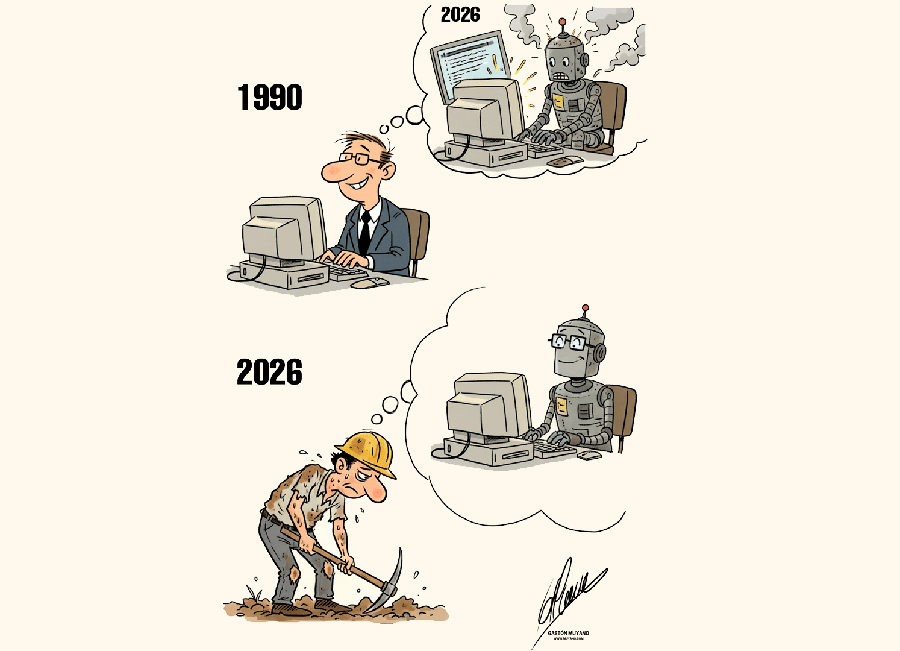Hard labor in the future? We thought it was the other way around.
I vividly remember the vision of the future they sold us in the 90s. Sitting in front of our CRT monitors, we dreamed of a 21st century where machines would handle all the tedious work. The promise was clear: technology would do the heavy lifting, and we would devote ourselves to leisure, art, and philosophy.
To capture the immense irony of that promise, I created this graphic. In 1990, an office worker imagines a robot doing his job in 2026. In the reality of 2026, the robot indeed has his position, but the human isn’t on vacation: he’s holding a pickaxe and a shovel, performing heavy physical labor.

Reality slapped us in the face with a plot twist. Artificial Intelligence didn’t come for the manual jobs first; it went straight for the creative, intellectual, and administrative tasks.
And the most curious part is that the dream isn’t dead; it has simply changed banners. Even today, some schools of thought, especially those close to socialism, continue to optimistically champion the vision of robots working for us, allowing us to dedicate ourselves to leisure and the arts. Theories about an automated communist paradise or Universal Basic Income, financed by the productivity of machines, are still debated.
But while that utopia is being discussed, reality seems to be pointing towards a much more chaotic and unequal adjustment. The truth is, nobody knows where this is all heading. It’s unclear if we’re moving towards liberation from work or towards a new class of precarious jobs that machines simply don’t want to do.
For now, the only thing that’s clear is that the future isn’t as simple as we imagined it. And perhaps it would be wise to keep a good pair of work gloves handy. Just in case.

